What are important ratios to know
How are they used
Who looks at them
Why they matter to you
Important ratios:
- Gross Profit Ratio: Gross Profit divided by Revenue
- Accounts Receivable Turnover : Sales Revenue divided by Average Accounts Receivable
- Inventory Turnover: Cost of Goods Sold divided by Average Inventory
- Return on Equity : Net Income divided by Average Stockholder’s Equity
- Profit Margin : Net Profit without Interest Expense divided by Revenue
- Current Ratio: Current Assets over Current Liabilities
- Quick Ratio: Cash and Short Term Securities and Accounts Receivable divided by Current Liabilities
- The percentage of each sales dollar left after product costs are deducted
- This tells you the direct profitability of revenue and should be tracked by month/ quarter/ year for changes both good and bad
- Can compare gross profit to industry
- Should look at this ratio for ways to improve business
Ratios – Accounts Receivable
Turnover
- How many times receivable have been collected during the period, more turn indicate accounts receivable are being collect more quickly
- Important measure of cash management – cash is king
- Can reflect quality of accounting staff and or sale staff – type of customer sold to
- If not watched, can slide and significantly hurt business
- Measures the number of times during a period that total inventory is turned
- High turnover rate indicate inventory is managed efficiently
- Low turnover rate indicates poor inventory management and again poor cash management
- Inventory turnover should be compared to similar industry
Ratios – Return on
Equity
- Give the effectiveness of investment
- Can compare to others in the industry
- Again, reflects good or bad business management
- Use of funds, would you make more in another investment?
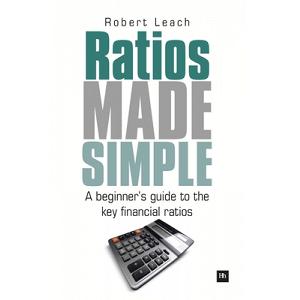 |
| Ratios Made Simple: A Beginner's Guide to the Key Financial Ratios |
Ratios – Profit Margin
- Profit Margin = Net Profit without interest expense divided by revenue
- Does not necessarily represent cash flow
- Should be tracked for trending
- Compare to industry averages to determine ability to compete
- Should not include personal expenses – not good business practice for several reasons
Ratios – Current
ratios
- Current ratio : current assets over current liabilities
- Identifies liquidity
- Sometimes used as covenant for banks
- Business owners should be worry of going under 1
- Bank could call loan or credit line
Ratios – Quick ratios
- Quick ratio : cash and short term securities and account receivable divided by current liabilities
- Identifies liquidity
- Good to track when short on cash to ensure ability to pay
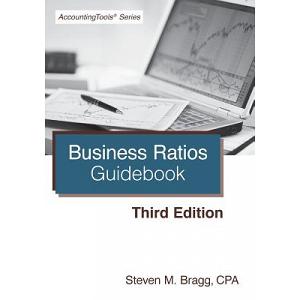 |
| Business Ratios Guidebook: Third Edition |
Good business practices
- Includes sound financial practices
- Know and manage by your numbers
- Never forget Brands Promise – referrals bring money
- Develop sound practices and processes
- Understand when change is needed
- Always include a process for long – term planning and accountability
Ratios are such a great tool for
business owner, this particularly is a business owner does not want to look at
the financial statements in detail every month, then get your accounting
department to produce ratios reports so you can at least look at those. That
gives you a very quick snapshot of what is going on as far as accounts
receivable turnover, tells you how good your cash flow is going to be, how fast
are you collecting those billings or is something going wrong so that you are
not collecting the cash as quickly as you thought you should or could. That’s a
ratio you can use.
There are other ratios that are
just really quick and easy for a business owner to look at. If you don’t want
to look at the financial statements, then let’s help you figure out which
ratios are important to your business so that you can look at those instead. The
use of ratios is really helpful when you are running a business. Even if you
look at all the financial statements and the numbers, sometimes the ratios tell
you just a little bit more.
We talked about gross profit
ratio, that’s our revenue less our cost of goods sold equals gross profit. Then
the gross profit divided by revenue is gross profit ratio. We want to
trend gross profit ratio and make sure
that it’s staying consistent as you grow the revenues. You may want to watch
this. If you are trying to grow your revenues at the expense of your gross
profit ratio, if you are doing this strategically, but that’s not something
that you probably want it can sustain. You want to make sure that you maintain
a good gross profit ratio.
 |
| Percents and Ratios Math Essentials: Children's Fraction Books |
An accounts receivable turnover, if you have good accounts receivable, that’s sales revenue divided by average accounts receivable. You want to make sure that you are collecting the money that you have billed your clients and they will notice if you are not paying attention to collection your accounts receivable. If you have accounts receivable that are going past 30 days, then maybe you want to call those customers. If the accounts receivable is going past 90 days, that could be a real problem. Every industry is a little bit different. Another example, there was a subcontractor who would bill and then the accounts receivable would go out 60 days because the subcontractor had to wait the contractor to actually collect the money. That subcontractor did not typically receive the money in 30 days. This the general rule, the longer your accounts receivable age, the less likely you will be to collect that money.
Your account receivable is cash
that is owed to you. You want to make sure that you collect it. An inventory
turn over is another ratio that is one to watch particularly if you’re a retail
business, it is your cost of goods sold divided by average inventory. In this
situation, it’s bad to have to much inventory because that’s cash that you’re
using as inventory. It’s bad to have too little inventory because then you’re
not able to provide your customer with their demands or the product that they
are wanting. This is such a problem for so many business owners.
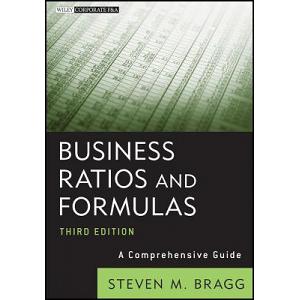 |
| Business Ratios 3E |
The business owner just anguishing over cash flow, she was having such a challenge with cash flow because she had so much inventory that a lot of the cash is there sitting on the shelves in the form of inventory. That can be hurtful for a business to have to much inventory. Watch the inventory turnover, a lot of times in retail, it will be may be four times, once for every season. Every industry is a little different. Home depot, the inventory is going to be a bit different from a retail inventory, but check the industry average for the inventory turnover so you can see what is acceptable and what is not acceptable as far as inventory turn over.
Here are some others ratios that
you want to consider. Return on equity is net income divided by average
stockholders equity. As we’re investing in our business, we want to make sure
that we’re getting a better return than if we were not running a business at
all.
Of course, when you first start a
business, a lot of businesses lose money. But as you go along and you’re in
business for awhile, this number should be better than if we just had our cash
in a money market account. Return on equity is something that we measure to
make sure that our business is still generating the profitability we expect.
Profit margin, that’s net profit without interest divided by revenue. Again, a number that we track because we want it to be consistent. As our revenue goes up, we want our profit margin to be consistent on a monthly basis or a quarterly basis.
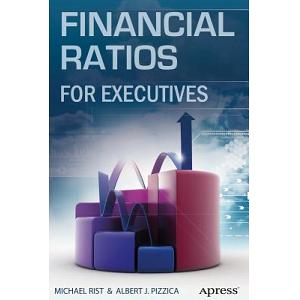 |
| Financial Ratios for Executives: How to Assess Company Strength, Fix Problems, and Make Better Decisions |
Current ratio is another ratio,
current assets over current liabilities. This is an indicator of liquidity and
it’s a ratio a lot of times that banks will use. If you have a bank loan, the
bank may specify that you need to have a current ratio in excess of one. A lot
of business owners don’t realize that this is in their loans docks and are a little
bit careless about this number. If you are too careless, the bank could
actually come and demand the loan to be repaid right away. You want to watch
current ratio. Say your current ratio is good, and you decide to buy large
piece of equipment. Well, that large piece of equipment would be in your fixed
assets, that’s taking out some money from your current assets, and you could
because of that, have a current ratio that’s less than one and make your
business vulnerable to your bank loan being recalled. Something that business
owner should watch.
A quick ratio, is even a better
indicator of liquidity, because it’s cash short term securities accounts
receivable divided by current liabilities. If our quick ratio is less than one,
then that's something you really need to watch and be concerned about.
The gross profit ratios, critical
ratios for most businesses. Again, the gross profit is the revenue less cost of
goods sold. We get the gross profit ratio by taking the gross profit divided by
revenue. We can track our gross profit on a monthly basis or a quarterly basis.
It is a percentage of each sales dollar left after we sell whatever we are
selling or producing. It can tell us how profitable the revenue is, and again,
if we are selling three different types of products, we need to look at the
gross profit ratio for each product that we are selling. If we take the gross
profit ratio and reduce it by the general and administrative expenses and we
were losing money and didn’t realize it. Probably to this day does not really
understand gross profit. The gross profit that you are looking for should be
enough to cover your general and administrative expenses. Do not grow your
revenue at the expense of your gross profit ratio. That’s a critical number to
watch and something that you need to guard. You want to look at your industry
to see what a healthy gross profit is, and this may change from time to time.
 |
| Ratios and Proportional Relationships - Math Book Grade 6 Children's Math Books |
Account receivable turnover, how many times do you collect your accounts receivable during a period or how quickly do you collect your accounts receivable? Is it 30 days, 45 days, 60 days? Lot of businesses are looking at attempting to collect accounts receivable within 30 days and certainty within 45 days. Then if it gets to 60 days, that’s not so good because this is going to effect your cash that your customers are keeping. It is importance to calling a billing and notice the customers. If the accounts receivable to much longer to be collected, you have to fix the problem very quickly. Now, some businesses offer a discount if the customers pay within 10 days. That’s an effective way of managing your accounts receivable. You put on your invoice 2 net 10, which shows that customer they can get a two percent discount if they pay in 10 days, or maybe a five percent discount, as a big discount, the two percent discount can add up, so some people that are good money managers will pay, because they’re going to get discount, even if it’s just two percent by paying within 10 days. Your accounting staff should be able to your accounts receivable and accounts receivable turnover. This can hurt the business if it’s not something that is being monitored on a regular basis. Inventory turnover is the number of times that you turn your inventory over during a period. Retail, you might turn your inventory over four times a year.
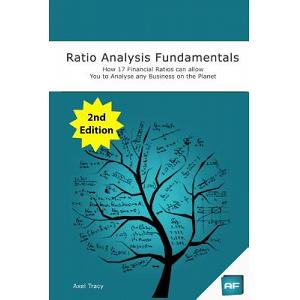 |
| Ratio Analysis Fundamentals: How 17 Financial Ratios Can Allow You to Analyse Any Business on the Planet |
If your turnover is low, then
maybe you’re carrying things in your store that aren’t selling. This again is
cash that’s sitting on the shelf. If you have inventory that hasn’t sold in
certain period of time, you know that it should have sold, then you should look
to getting rid of that inventory even if it’s at a discounted rate. There are
sometimes businesses out there that will buy a whole shelf lot of inventory at
a discounted rate. But maybe it’s more than what you paid for the product, give
you your shelf space and gives you the cash. Than you can put something in that
shelf space that will sell.
Managing your inventory turnover
is important to businesses, particularly retail businesses. Too much inventory,
not good, too little inventory, not good. Inventory management might be
something that you can determine from your industry. What is a good inventory
turnover and how close are you to the inventory average.
Return on equity tells how good
your investment is from your business. If I can earn more money in a safe
investment, than it’s silly to be running a business. I guess, you could be
doing this for your ego, but otherwise, it does not make sense to be running a
business if you have a poor return on equity, so that you would want your
return on equity to exceed what you can get as far as a bank, a CD or money
market or whatever. Fixed income that’s fairly secure.
You want to look at what other
industries are getting. If there is a challenge in the industry, ups and downs,
then this is a little bit of an exception. Industry sometimes have struggles.
Hopefully it’s not the end of the industry, but industries do have struggles.
You would take into account as a fluctuation in the market, but in general,
there should be a consistent good return on equity.
If the business, the CEO, is
evaluated on return on equity is a good means of saying to the CEO you’re doing
a good job, or maybe you’re not doing a good job. Whenever you’re running a
business and there is an equity, it’s using the money that is in the business,
so again, would it be better if you use this money to have another different
investment that earn more or had less risk.
Profit margin, this is the net
profit or net income without interest expense divided by revenue. Again, this
is not cash flow, because part of your profit margin is depreciation or may be
amortization, those are not cash flow items. We want to track the profit margin
to make sure that it’s trending in the same direction as if our revenue is
going up, you want the profit margin to go up. We may actually be able to
reduce revenue and improve profit margin if the revenue that we are going after
has a bad gross profit. Again, we look at the industry to see who is doing what
in the industry, how well other businesses are doing in the same industry. We
don’t want to compare profit margin to another industry because that does not
make sense.
 |
| Financial Ratio For Bussiness |
There are reasons why some industries have a better or different profit margin, so it’s really best to look at the profit margin in the same industry. Small business owners sometimes do things like put their personal expenses into their business, that’s such a bad idea. There are so many reasons, if you need to get credit or if you need to sell the business and you have personal expenses in there, it does not look as though you’re running the business as a business should be run, not a good business practice.
Do not include your personal expenses
as line items in your business expenses, because again there’s no valid reason
for it and it does not make your business profitability look good that may hurt
you in the long run.
The current ratio, the current
assets the current liabilities. Because of the fact that it reflects liability
and because of the fact that it’s used frequently by banks as a requirement in
the covenants and something that if you don’t manage this could end up having
your bank be called, which is painful for a business owner. Because trying to
get a loan or line of credit with moment’s notice, you’re going to end up
possibly paying a bigger interest rate or you’re going to need to maybe borrow
from friends and family. You need to watch the current ratio, current assets
over current liabilities, and keep it over 1 , just keep it over 1. That means
you’ve got the cash or the assets to cover your current liabilities, and that’s
what you want. You want to make sure that you have enough cash, accounts
receivable, inventory, and short term investments to cover your accounts
payable or current liabilities.
The quick ratio is a better
indicator of liquidity because its cuts out inventory, cash, short term
securities, and accounts receivable over current liabilities. It’s even better
to identify liquidity because if inventory is in here which is part of the
current ratio, we don’t know when we are going to sell the inventory, we may
never sell it. We may have bought a whole bunch of cricket widgets and never be
able to sell them. If we are using a quick ratio, this is a really valid
indicator of liquidity.
Can we pay our liabilities? If cash is tight, we want to watch this closely. If cash is tight, which happens in many small businesses as you’re growing, we want to watch this ratio closely, because this tells us when we will be able to pay our creditors or when we may be having some challenges in paying creditors. We do encourage ourselves as a business owner to have good relationship with our vendors because the vendors can help you in running your business, give you information about what’s going on in the industry, even tell you a little something about your creditors. You want to take care of your vendors, you want to stay in partnership with your vendors so that they can help you as you run the business.
Source: coursera

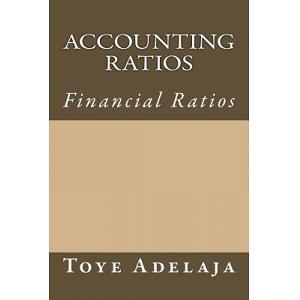

No comments:
Post a Comment